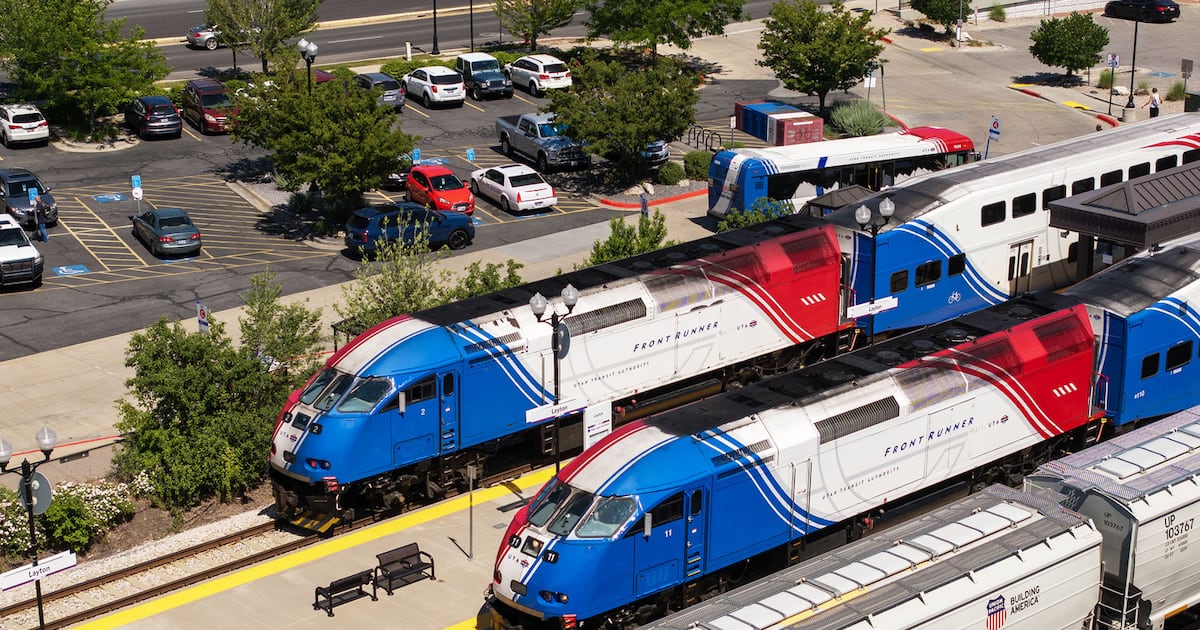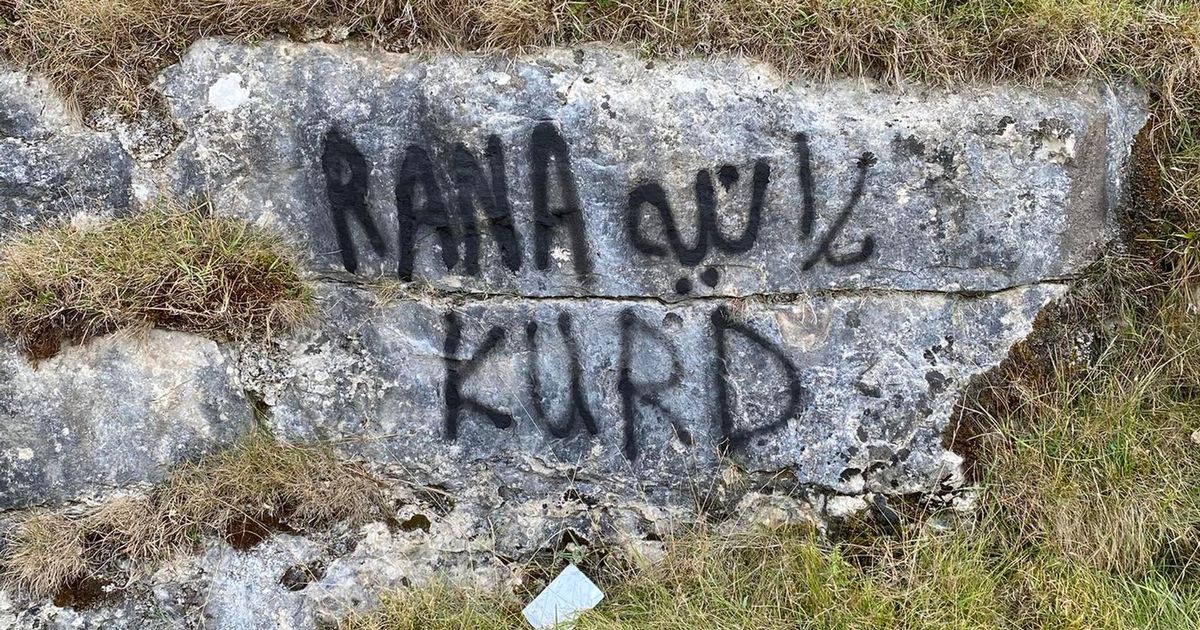
Some Provo residents are frustrated with what they say is a lack of communication from the Utah Transit Authority and the Utah Department of Transportation after learning about plans to demolish their condos to make way for an additional FrontRunner track.
UTA and UDOT are partnering on the FrontRunner double track project to add an extra track in 11 strategic locations to allow for increased rider capacity and improved reliability through doubling the frequency of trains. At peak travel times, ridership reaches 90% seated capacity, UTA project director Brian Allen said during a Provo City Council work meeting on Sept. 9.
UTA plans to extend the double track from Provo Station, 0.7 miles to meet up with existing double tracks just south of Provo Center Street, among other infrastructure improvements. Although it’s the shortest stretch of FrontRunner track slated for upgrades, it is having a large impact on the Mountain View Condos community situated just south of the railroad tracks, at 623 S. 500 West.
The community impact
Residents of the 16 condos and one private property will be forced to sell their homes and relocate for the project, while the other 16 units in the Mountain View Condos community will be left with increased noise, vibration and devalued homes, they say.
“It’s overwhelming,” said condo owner Crystal Myler, her voice heavy with emotion. “I’m a planner. … I had a plan for being able to stay here until I was ready to move to my next chapter of my life. This year is not the right year for me to have to navigate this, so it’s been a real emotional toll. It has thrown everything that I was expecting of my life plans into chaos.”
Myler moved into her condo three years ago, and her home has been her stability and foundation. She’s devastated knowing the house she has been investing in will no longer be hers, but the hardest part for her to swallow was learning how long the project had been in the works before property owners were notified.
In July, the homeowner association manager was contacted by UDOT officials, who wanted to set up a meeting. Myler said no details were given on what the meeting would be about. As a homeowner association board member, she got concerned and searched UDOT’s website for more information. That’s where she found a noise analysis, published in May, for the double track project that showed four condo buildings marked for removal.
“We assumed that meant they were wanting to buy the properties, but we still had no confirmation, no information at all,” homeowner association board president David Manning said. He has lived in his condo for nine years.
UDOT officials set up a meeting with the homeowner association a few weeks later. At the meeting, Manning said, the HOA board was given papers detailing the property purchasing process “with the full assumption that we would know what was going on, even though they had told us nothing.”
Manning said the board then told UDOT officials they needed to inform all of the residents of what was going on, as there were also units at the Meadows Apartments being impacted. UDOT officials said they’d plan a neighborhood meeting in August and distribute informational flyers, but that never happened, according to Manning.
The meeting kept getting pushed back, he said, causing residents to feel increasingly in the dark. Eventually, the HOA sent out a notice to inform the residents of the little the board knew about what was happening.
“We reached out to the Provo City Council. … They knew nothing about any of this; it was a complete surprise to them,” Manning said. “If we weren’t disseminating information, no one in the community would know at all. They’d have no idea.”
Eventually, on Sept. 11, flyers were distributed in the neighborhood notifying residents of a neighborhood meeting planned for Thursday, Sept. 18. Manning said the distribution of those fliers was the first time UDOT had communicated with anyone in the community besides the HOA board, and UDOT didn’t even mention the project’s impacts.
City Council gets involved
During a Sept. 9 meeting, Provo City Councilwoman Katrice MacKay asked UTA why the council was first notified by citizens about this issue, rather than officials from UDOT or UTA, adding “that really irked us.”
“It irked me, too,” Allen said. “That was honestly just an oversight in the way we delivered this. It was a mistake on our part. Our intention always was to come to this body and present. … We posted a study online that we didn’t realize had some of the apartment acquisitions on there, so we got some questions.”
“I think whenever you are going to be taking the land in our city, we should know about it as soon as you know,” MacKay responded.
Allen said UTA would do better informing residents in the future, as the long-term goal is to make the entire FrontRunner system double-tracked.
While Allen and his project team couldn’t answer specifics on how much money people would get for their homes, they explained the relocation process includes a calculation based on comparable properties to compensate renters and homeowners being forced to relocate.
The UTA officials also did not have logistics for how many of the units were rented versus owned, how much the properties are valued at, or how the project would impact those values — something that upset Manning and Myler.
Allen said he was unsure if noise walls or other barriers would be implemented in the area, as the mitigation study will not be completed until the end of the year. The engineers are being careful to adhere to quiet zone requirements to ensure that status is maintained, he added.
The UTA team admitted that they had only briefly met with the Mountain View Condominiums HOA, and Thursday’s meeting will be the first time they meet with homeowners. When MacKay asked why it took so long for UTA to communicate with the property owners, Allen said, “I’ll admit that the rollout was not the way we wanted to do it.”
Frustration with communication
As Myler researched the double track project, she discovered UDOT officials had been discussing plans with the Provo engineering department for more than a year. As she read documents on right of way acquisitions from UDOT, she found a rule that said residents should be notified as soon as it becomes clear their homes are likely to be impacted.
“That time would’ve been a year ago, probably more,” Myler said.
Myler said she saved up money all last year and got new carpets in May. If she had known her house was marked for demolition for more than a year already, she said she wouldn’t have paid for new carpets — and she isn’t the only homeowner in that situation.
Manning said several homeowners have done partial or full remodels. The HOA also recently replaced two roofs and multiple staircases and upgraded landscaping with tree removal and new fencing, he said.
“We have, as a community — both the individuals and the HOA — have spent hundreds of thousands of dollars in improvements in the last year,” Myler said.
While those being relocated will at least be assisted in their relocation, no help is being given to those left in the community, Manning said. With half the condos being removed, the HOA’s revenue will be cut in half. Manning says that will make it nearly impossible for the community to survive in today’s high-cost environment.
Increased noise from additional trains could also negatively impact home values, he said.
“We’re not so much upset that the trains are expanding … it’s how they approached the entire thing with no communication, no information, no help, no real aid,” he said.
According to the project website, construction is supposed to be from 2026 to 2029, but the residents have been given no timeline for when they will have to sell and move out.
For Manning and Myler, it feels like a “gut punch” to hear the project officials talk about being fiscally responsible when “our tax dollars are being used to tear apart our community.”
Myler hopes things will be different after Thursday’s meeting, but she isn’t too optimistic that the lack of communication will change.



